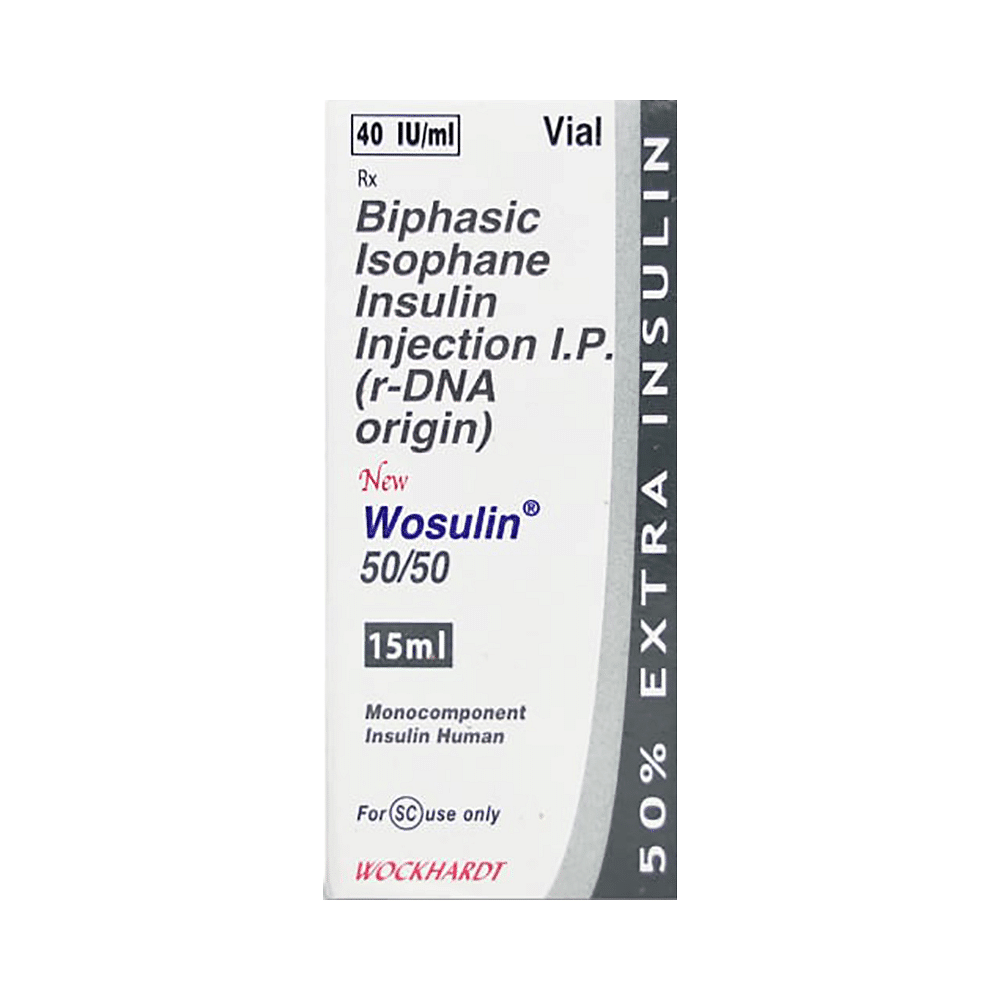
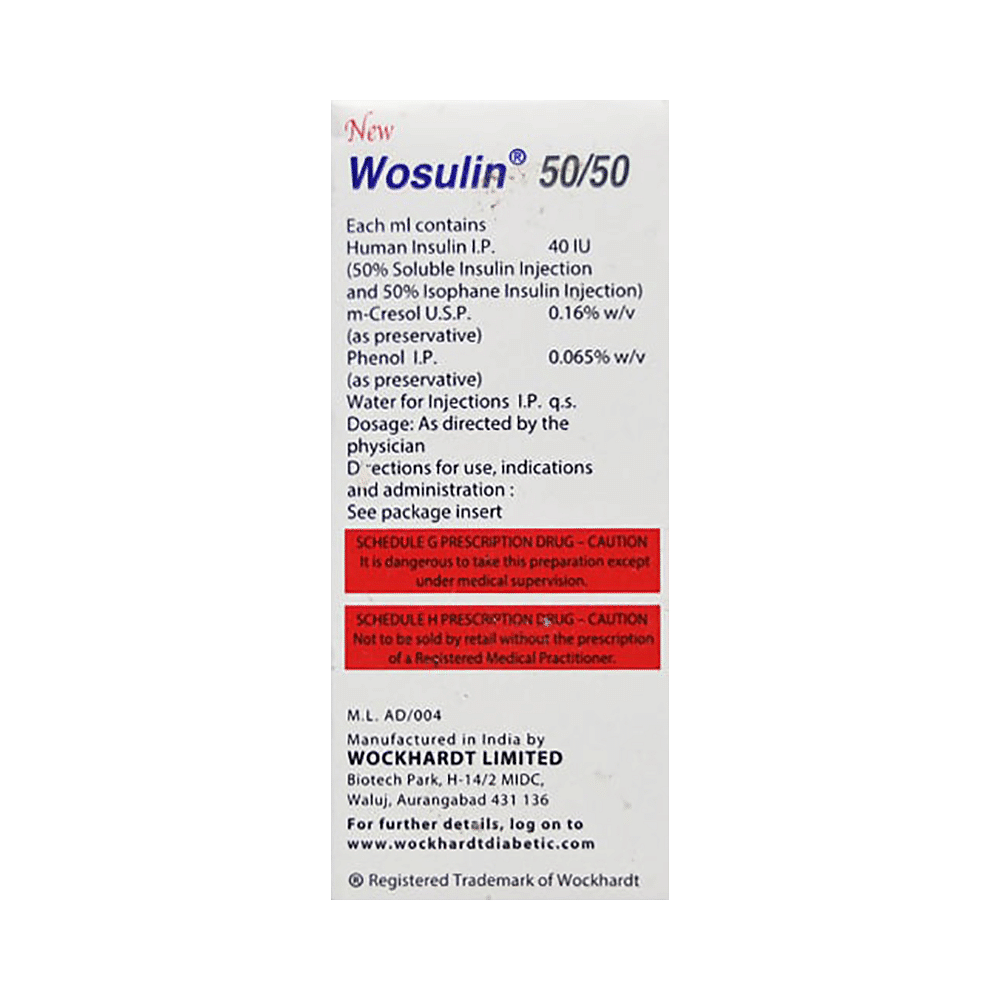
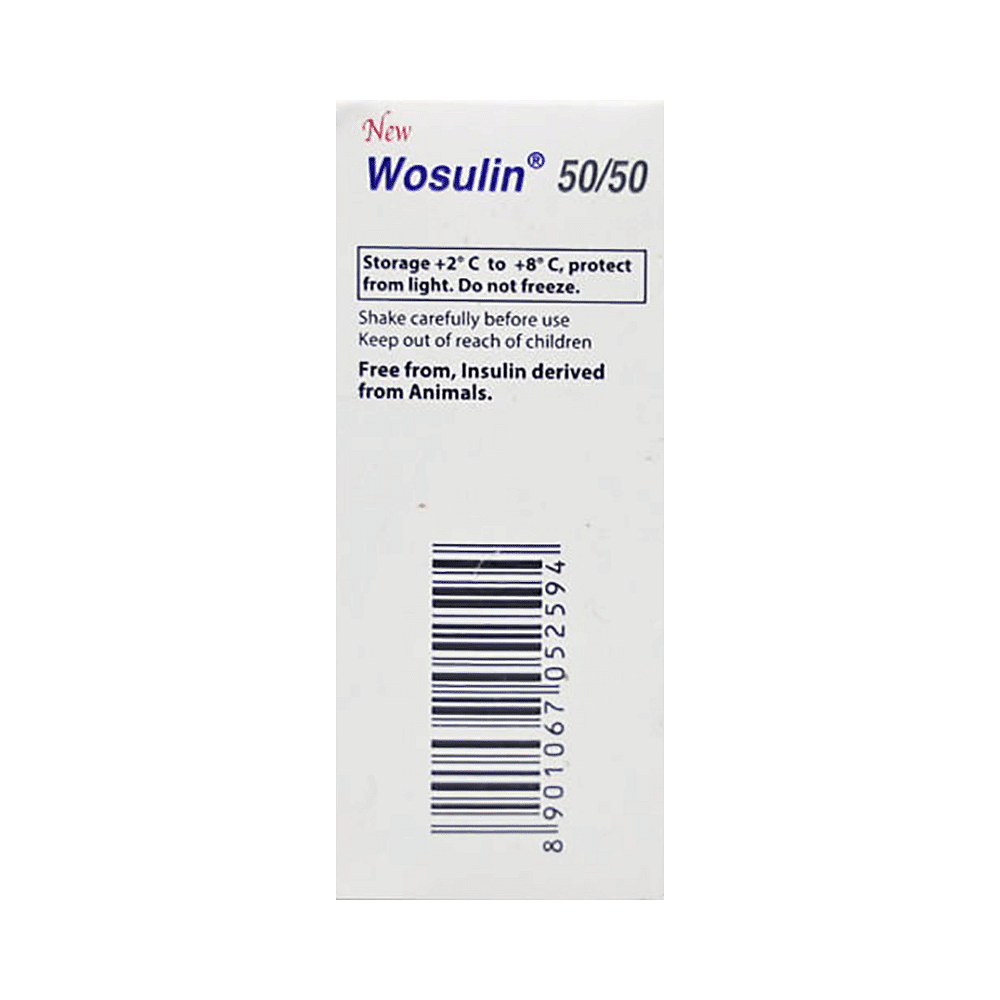
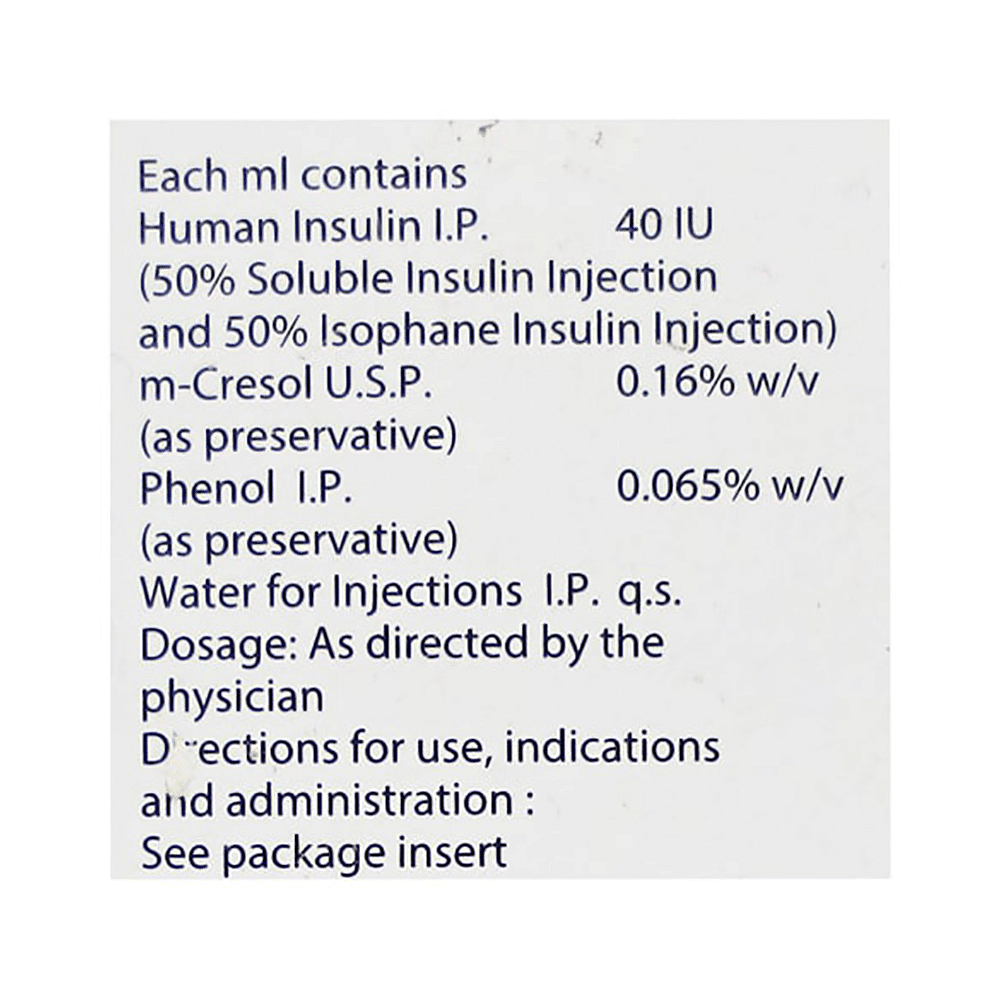
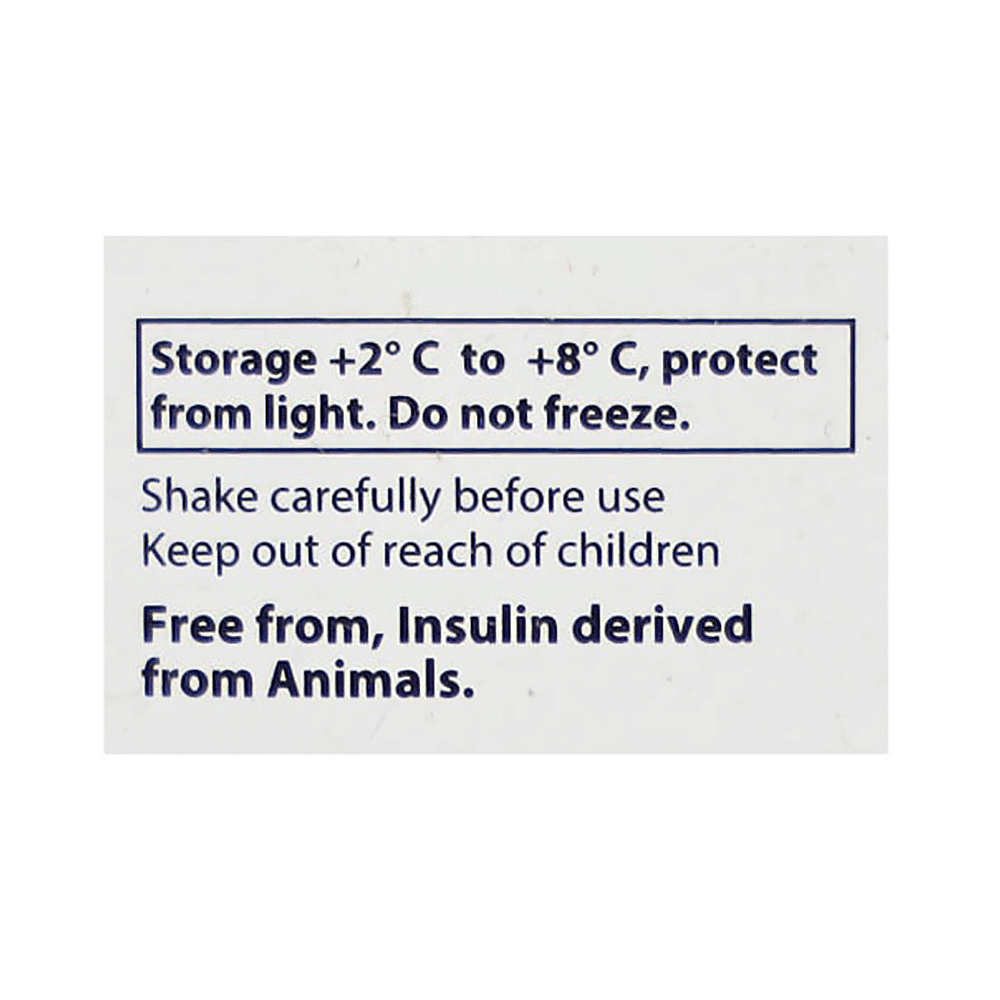
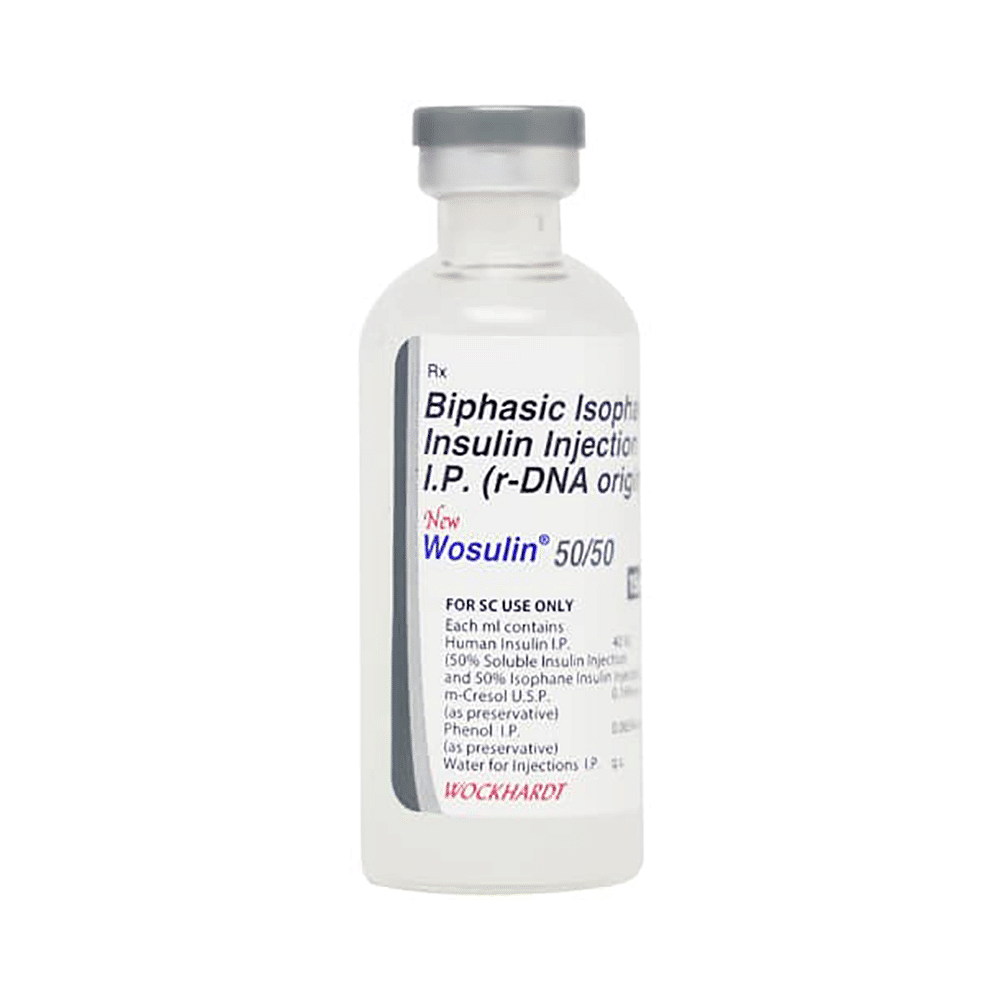
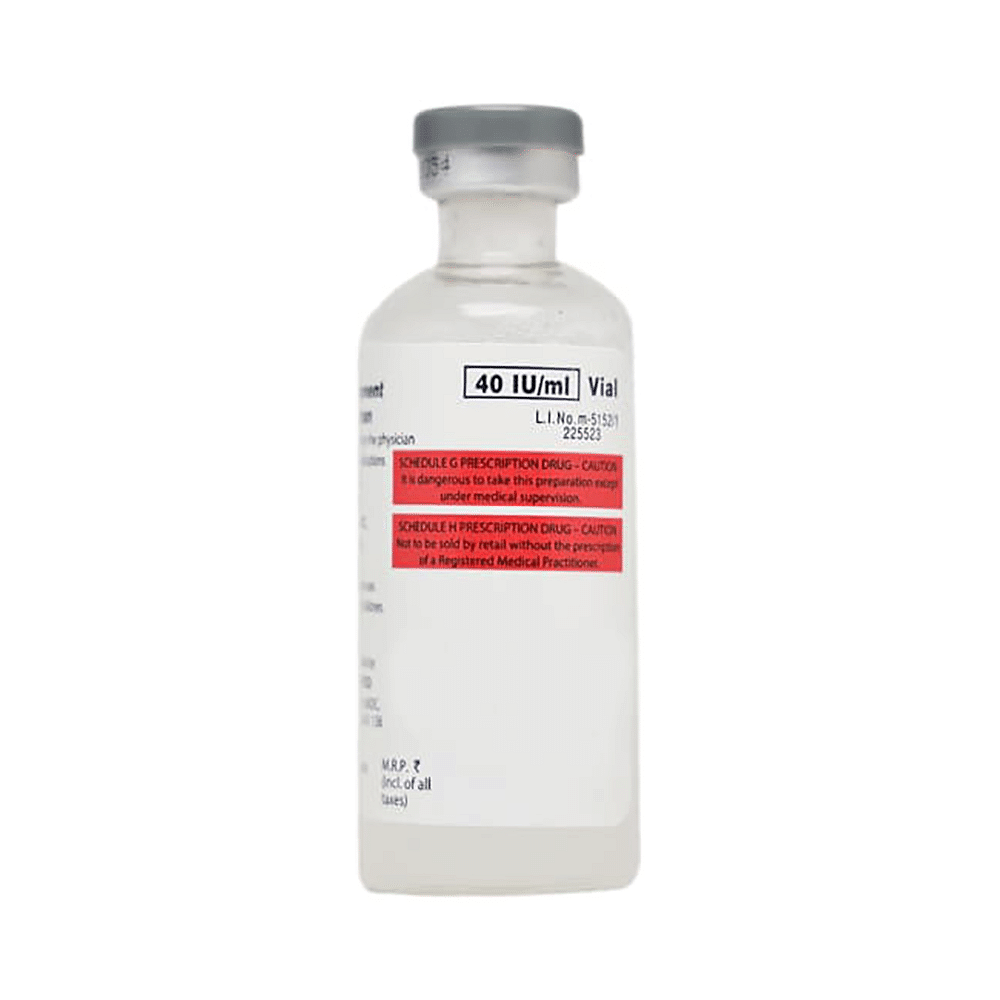
New Wosulin 50/50 Injection
Manufacturer
Wockhardt Ltd
Salt Composition
Insulin Isophane (50%) + Human insulin (%)
Key Information
Short Description
New Wosulin 50/50 Injection is a combination of two medicines, an intermediate-acting and a short-acting type of insulin, used to treat diabetes mellitus (type 1 and 2) to improve blood sugar control in adults and children.
Dosage Form
Injection
Introduction
New Wosulin 50/50 Injection is a combination of two medicines, an intermediate-acting and a short-acting type of insulin. It is used in the treatment of diabetes mellitus (type 1 and 2) to improve blood sugar control both in adults and children. It helps maintain the blood sugar levels in diabetic patients.
Directions for Use
Your doctor or nurse will give you this medicine. Kindly do not self-administer.
How it works
Insulin Isophane has a prolonged duration of action while human insulin has a fast onset of action..Together they ensure rapid and consistent sugar control by facilitating reuptake of sugar in muscle and fat cells and suppressing the production of sugar in the liver.
Quick Tips
Take it 15 minutes before a meal or within 20 minutes after starting a meal. Injection below the skin of the abdomen results in faster absorption than other injection sites such as skin of the upper arms, thighs, or buttocks. After injection, the site of injection should not be massaged. Injection sites must be rotated to prevent hard lumps from developing at one site. Change to another type or brand of insulin should be done under strict medical supervision as it may require a change in dosage.
Related Medicines
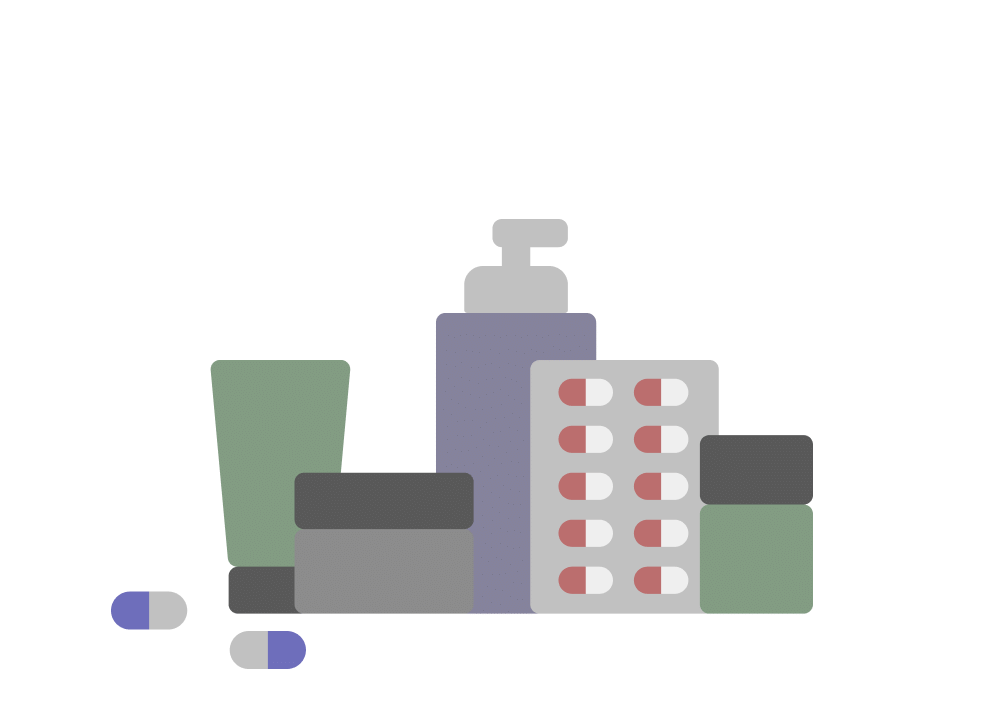
Insutrend 50%/50% 40IU/ml Injection

Wosulin 50/50 Injection 40IU/ml

Insucare M 50 Injection 40IU/ml

Recosulin M 50 Injection 40IU/ml

Lupisulin M 50 40IU/ml Injection
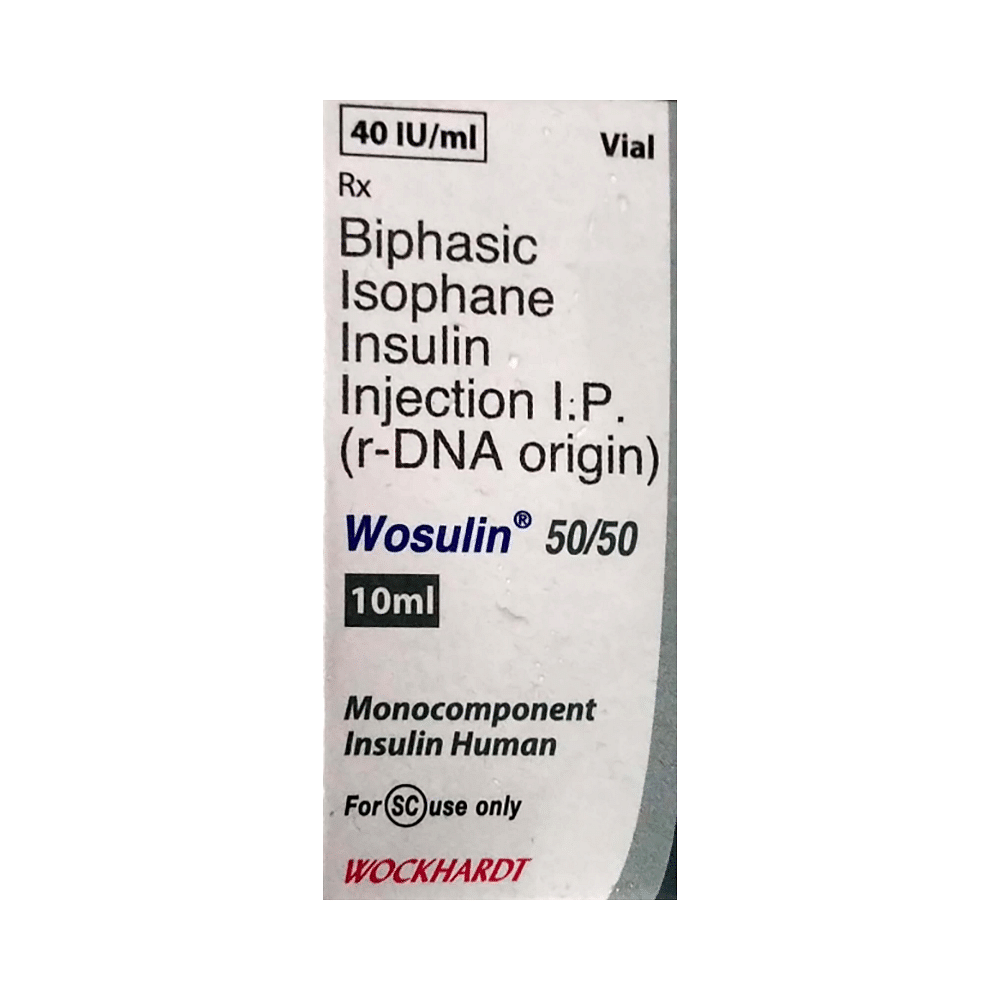
Wosulin 50/50 Injection 40IU/ml
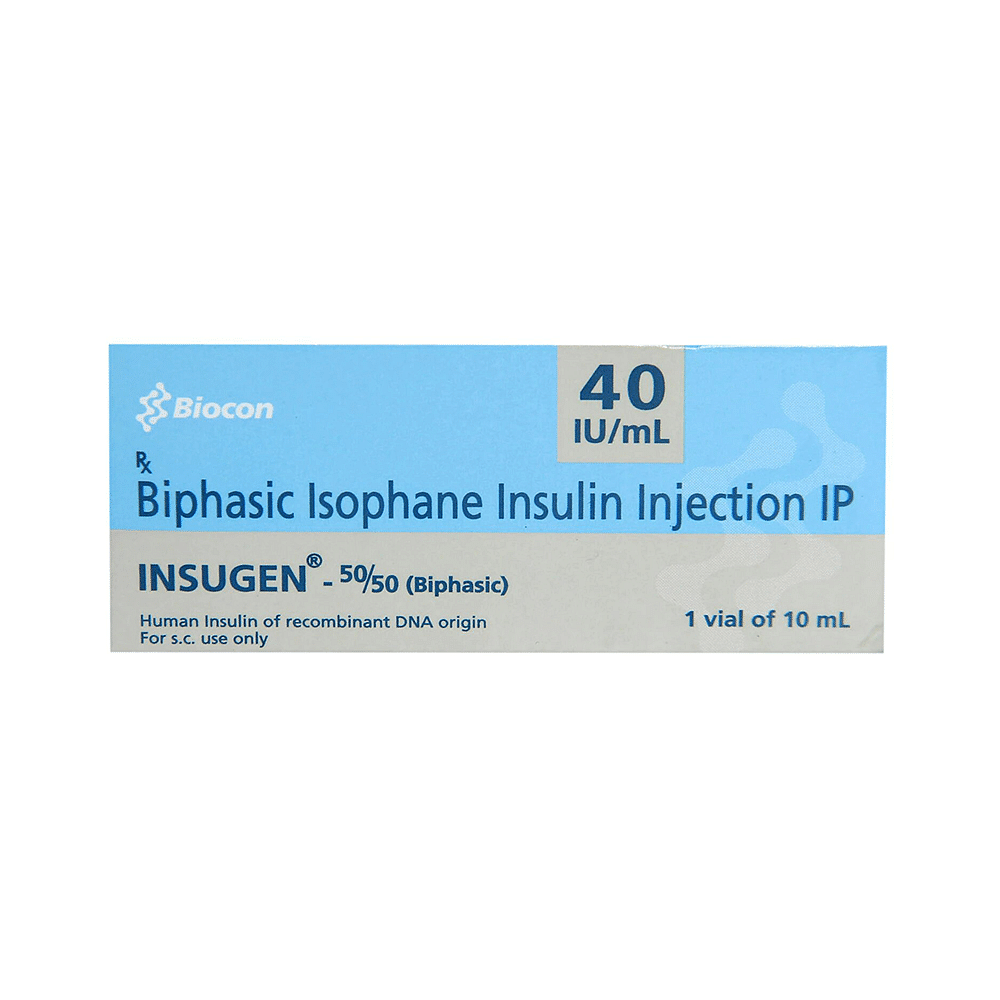
Insugen 50/50 Injection 40IU/ml
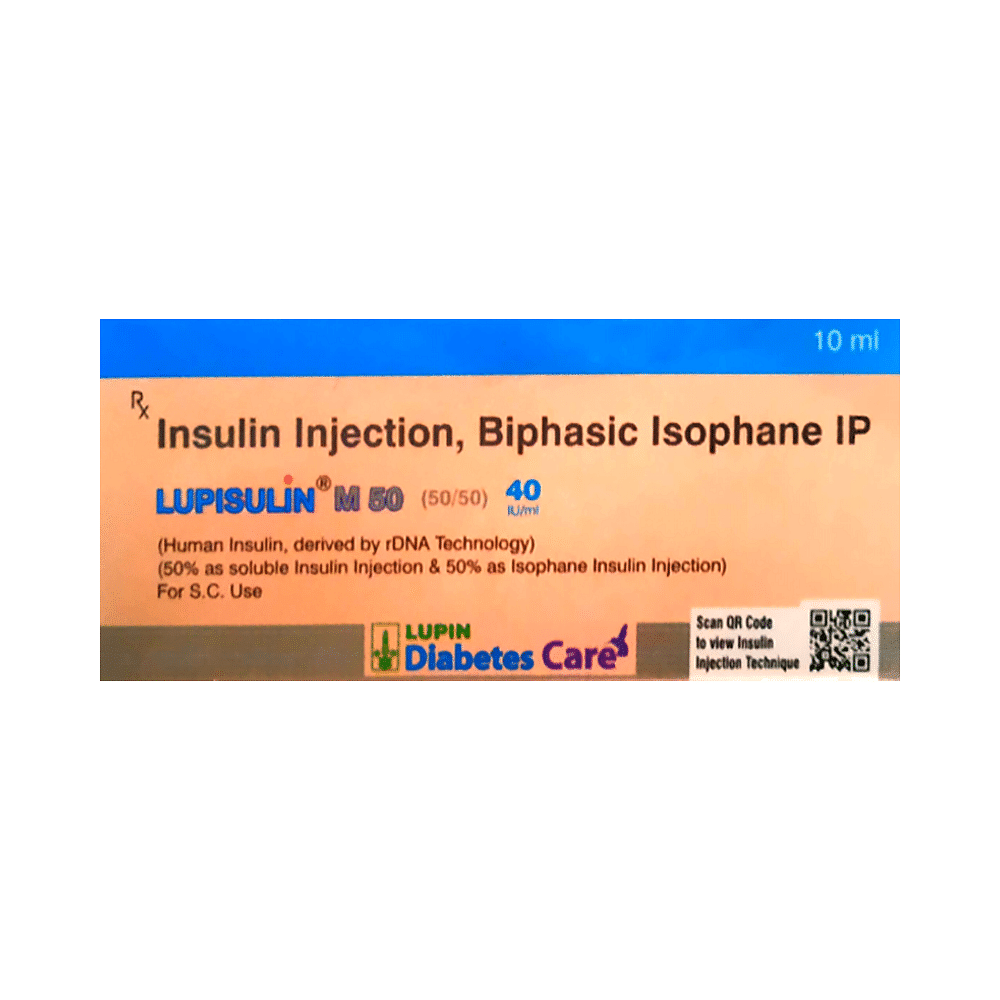
Lupisulin M 50 40IU/ml Injection
Frequently asked questions
Can I drink alcohol while taking New Wosulin 50/50 Injection?
No, it is not recommended to consume alcohol when using New Wosulin 50/50 Injection. Alcohol consumption may lower your blood sugar levels and increase the risk of hypoglycemia (low blood sugar) episodes.
What are the instructions for storage and disposal of New Wosulin 50/50 Injection?
Store New Wosulin 50/50 Injection in its original container or pack, ensuring it is tightly closed. Refer to the provided instructions on the package label for detailed storage recommendations. Dispose of unused medicine responsibly and prevent access by pets, children, or unauthorized individuals.
Which is the best area to inject New Wosulin 50/50 Injection?
New Wosulin 50/50 Injection is administered subcutaneously. The optimal injection sites include your abdomen, upper thigh, upper arm, or buttock.
What are the symptoms of high blood sugar?
Symptoms of elevated blood glucose levels may include frequent urination, increased thirst, fatigue, nausea, vomiting, shortness of breath, abdominal pain, a fruity odor on your breath, dry mouth, and an accelerated heart rate.


